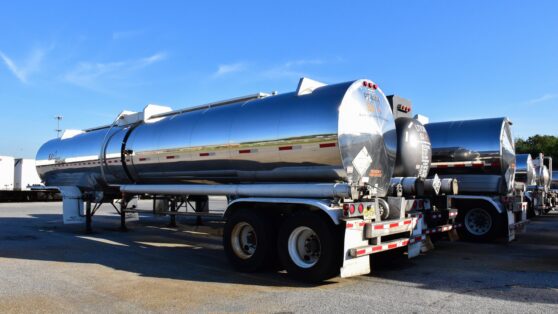In today’s digital world, telematics software is no longer a luxury but a necessity. Research shows that the market for fleet management systems is expected to grow from an estimated $14 million to $30 million in 2022. This shows that more transportation companies are taking fleet safety and tracking seriously—and you should too.
However, investing in fleet management software is a huge decision to make. In addition to getting value for your investment, you also want to know if telematics software is right for your company.
From costs to interpreting data, there are dozens of factors that your company needs to consider. In this article, we lay down eight important questions you need to ask before investing in fleet management software.
What Can a Fleet Management Software Do?
A dedicated fleet management software does not only track fleet productivity. It also helps increase road safety and driver retention. In a single glance, telematics software can show you risky driver behaviors, road hazards, and productivity bottlenecks.
Real-time videos capture events on the road and upload them to a dashboard, allowing managers to proactively correct unsafe driving practices through training and rewarding drivers for positive behavior. Ultimately, this leads to better driver engagement and efficiency.
In addition to increased productivity and better road safety, professional fleet management also helps reduce operational costs, improve CSA scores, and ensure compliance with legislation. Although managers do not always have control over these things, telematics software can help streamline management systems and ensure that drivers meet their targets on time.
Questions to Ask Before Buying a Fleet Management Software
Managing a fleet of commercial vehicles can be a challenge without clear processes. With telematics software, managers can coordinate activities that will save the company time and money.
However, not all telematics software is created equally. Before committing to buy, ask the provider these questions:
Can it support the size of my fleet?
Good fleet management software should be scalable. It should grow with your fleet—whether you’re starting with 10 or 100 vehicles. Not all fleet management software is flexible enough to support different fleet sizes, but the Netradyne system adapts to your business needs. With the ever-changing fleet transportation landscape, it only makes sense to pick adaptable software that’s within budget. Netradyne’s pricing options allow you to customize your plan based on the number of vehicles in your fleet. As you grow your business, you can upgrade your system to match your current needs.
Is it easy to use?
One advantage of getting a fleet management solution like Netradyne is that there is no steep learning curve to using it. Onboarding is quick, so you can start monitoring your fleet immediately. Training videos and other educational resources are part of the package, so your team can begin learning about the different features independently. And if you need further assistance, a helpful sales and customer service team can help you quickly navigate the technology.
Can I access data anywhere?
Fleet managers need to have access to data wherever they may be. That means being able to check on your team on a mobile phone, tablet, or desktop. Fleet management software is usually cloud-based, so you can access your fleet dashboard anywhere wherever there is an internet connection. A mobile app lets you see an overview of the day’s events in real-time even when you’re on the go. This helps you gain visibility of what’s happening on the road, so you can quickly communicate with your team and prevent vehicle downtime.
Can it help me interpret data?
Making the right decision for your fleet can be challenging if you don’t have hard data. Although spreadsheets can help you track down information, they can be cumbersome to use. What you need is access to quick and easy-to-interpret data. Netradyne’s fleet management system has fleet reports built in that will give you powerful insights into your team’s needs. The software features data visualization that you can interpret at a glance. A robust filtering system lets you view reports by date range, so you can choose the type of report that you want to view. You can export these reports to share with the stakeholders in the company. In addition to reports, you’ll also have access to videos that you can playback to review what happened on the road.
What types of data does the system collect?
Fleet management software tracks real-time performance metrics (e.g., vehicle utilization, fuel consumption, route deviation, compliance scores, etc.). These driving events are captured in real-time and are uploaded directly to the fleet dashboard for you to review. But perhaps the most important information that the system records is fleet safety. With the help of in-cab and front-facing dash cams, fleet managers can see if drivers are distracted while driving or if there are potential road hazards ahead. Other information that may be collected includes idle times, maintenance and repair issues, harsh acceleration, and more.
Is the fleet management software automated?
Translating data into meaningful insights should be an integrated feature in a fleet management system. The good news is most fleet management software automates daily operations, so managers can glean relevant information in just a few taps on the dashboard. This feature also eliminates the need for manual data entry, allowing managers to save time and spend it instead on streamlining daily processes.
Is the uptime guaranteed?
No system is perfect. But for businesses that rely on real-time data, uptime must be guaranteed throughout the contract. If there are no guarantees, ask the provider what for a workaround if downtimes happen. This helps set your expectations and allows you to create backup plans.
What kind of after-sales support will I receive?
Once you’ve installed the system in your fleet, you’ll most likely have a dozen of questions about the technology. Some questions may already be covered in the onboarding, but you need an answer that’s tailored to your fleet. Before making the jump, ask what kind of support you’ll be getting after the purchase. Ask the provider if support is already part of the contract or if you must pay extra for expert help.
Final Thoughts
Investing in fleet management software is an important decision to make for any fleet company. Providers have different service offerings and features that you need to consider carefully. Before settling with a provider, get to know more about the service by asking questions. A provider should be able to tell you the advantages and limitations of their product and provide you with clear pricing options that meet your budget.
Netradyne’s fleet management system allows you to create efficient processes and improve the safety performance of your fleet. Learn more about Netradyne products to see how they can benefit your company.







